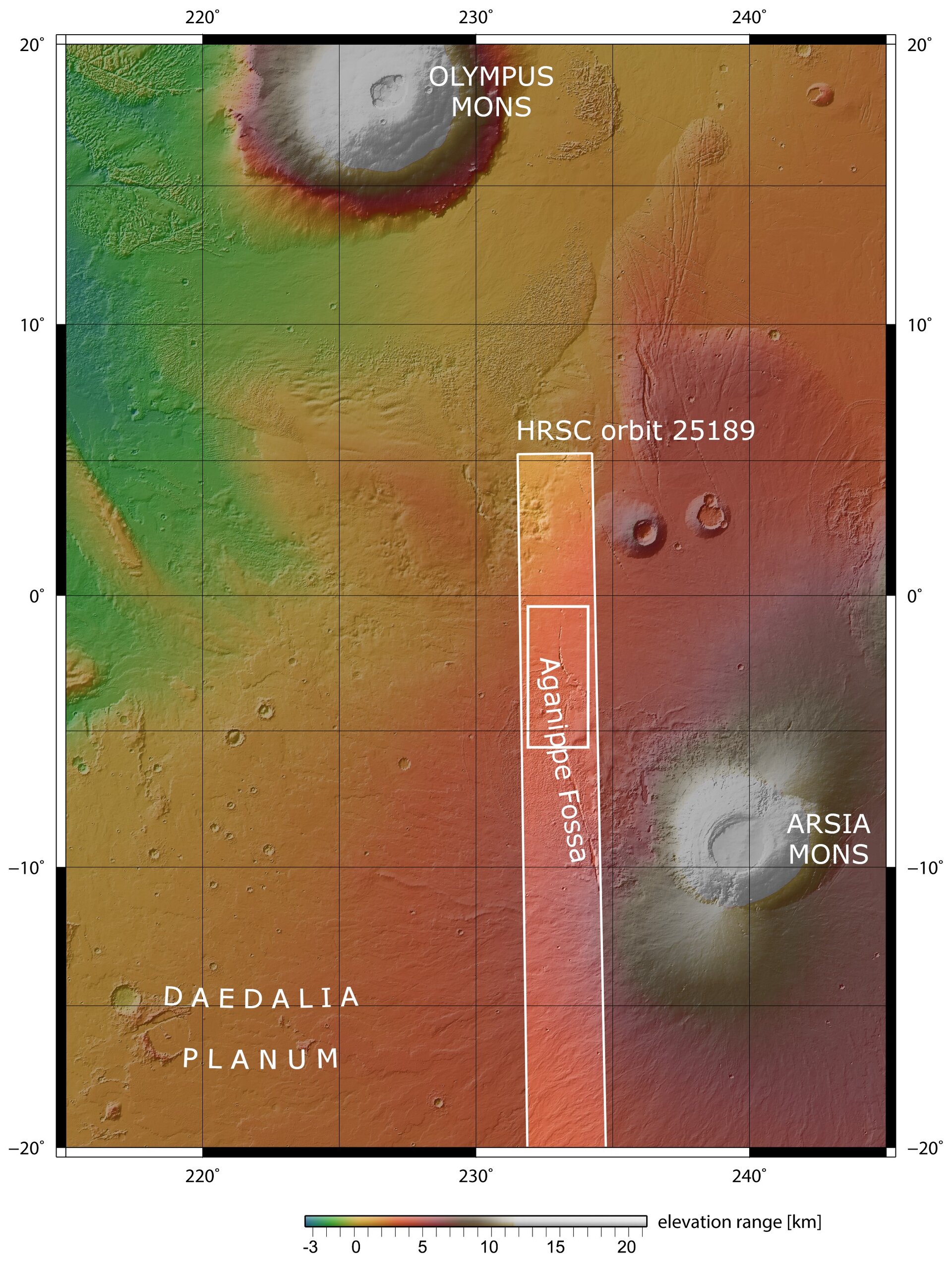A new image taken from a satellite orbiting Mars has revealed a striking canyon in unprecedented detail. Known as Aganippe Fossa, the gnarly, scar-like ravine was first spotted by astronomers almost a century ago, yet can now be seen up close for the first time.
Measuring roughly 600 kilometers (373 miles) from end to end, Aganippe Fossa is a colossal example of a graben, which is the name given to ditch-like grooves with steep walls on either side. For comparison, the Grand Canyon in the US is 446 kilometers (277 miles) long, although our planet’s most extensive canyon – which is located under Greenland’s ice sheet – does beat the Martian rift, with a length of around 750 kilometers (460 miles).
The new image was captured by the European Space Agency’s (ESA) Mars Express, which has been orbiting the Red Planet since 2003. It shows the curved, broken gorge snaking its way across the Tharsis region, which is home to some of Mars’ largest and most iconic volcanoes.

This wider view shows the location of Aganippe Fossa in relation to the enormous Martian volcanoes Asia Mons and Olympus Mons. Image credit: NASA/MGS/MOLA Science Team
The closest of these to Aganippe Fossa is Asia Mons, which has a height of around nine kilometers (29,500 feet). Further north lies the imposing figure of Olympus Mons, the tallest volcano in the solar system with an altitude of about 25 kilometers (82,000 feet).
According to ESA, it’s currently unclear how Aganippe Fossa formed, although it may have been created as magma from beneath Asia Mons forced its way upwards, causing the Martian surface to stretch and crack millions of years ago.
As awesome as the canyon looks in these pictures, however, it’s nowhere near as impressive as Mars’ longest ravine, the Valles Marineris. Stretching for an incredible 4,000 kilometers (2,500 miles) along the planet’s equator, this imposing landmark is the largest canyon in the entire solar system.
Source Link: Stunning New Image Shows Enormous “Scar” Stretching Across Mars